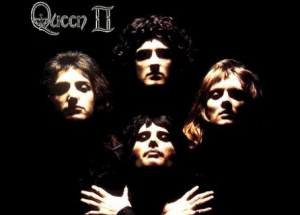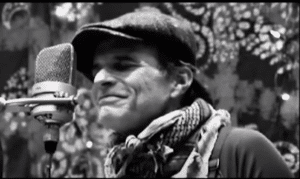10 Facts You Might Not Know From These ’70s Albums

Some Of These Might Surprise You
The ’70s – we have a love/hate relationship with this era. On one hand, it gave us some of the greatest classic tunes of all time. The decade represented an explosion of talent – singer/songwriters were becoming a trend and rock was branching out into several subgenre. But on the downside, it’s often remembered as the time of the disco mania. Let’s not go down that path because it only upsets us.
Now, there were so many things going on in the ’70s that sometimes it’s hard to keep track of tiny details – little-known facts which might surprise even the most diehard fans. There was no Google, Twitter or Facebook and so there was no way of knowing seemingly insignificant things unless they’re published by magazines and newspapers or shown on TV.
This list includes all those interesting things about ’70s albums which you may not know. If you already do, congratulations. If you don’t, you’re welcome.
10. Bob Dylan had to re-record some songs in “Blood on the Tracks” (1975) after the test acetate pressing
Bob Dylan’s “breakup album” is one of his finest works as a singer-songwriter. He exceeded everybody’s expectations and while it received mixed reviews when it was released, over time people acknowledged his musical brilliance evident in this record. It was deeply personal from him since it tackled his failing relationship with his then-wife Sarah. Even their child Jakob was well-aware it was about his parents’ marital discord.
After listening to the test acetate pressing, Bob Dylan wasn’t at all pleased. Five songs were scrapped and re-recorded.
“A lot of people tell me they enjoy that album. It’s hard for me to relate to that. I mean … people enjoying that type of pain, you know?” – Bob Dylan
While majority of listeners believe he made the right call, there are still those who prefer the original versions over the replacement tracks. Obviously, that was a good choice since over the years, the album received more and more praises.
9. Patti Smith’s “Easter” (1978) was her first album since her infamous stage fall
Patti Smith Group’s third studio album “Easter” was commercially successful due in part to the diversity in the sound and musical styles used. It received widespread critical acclaim even if it didn’t make it to the top in the US Billboard and UK Charts. Also, this is the band’s first album after Patti Smith broke her neck during a stage fall in January 1977.
It was during the tour for “Road to Ethiopia” in Tampa, Florida when she fell while dancing on stage and plunged 15 feet into the pit. She had to wear a neck brace and undergo physical therapy. The sad part is, “Road to Ethiopia” was a commercial failure.
“I still suffer from it. My neck… I still get discomfort, spinal discomfort. It’s nothing I can’t live with.” – Patti Smith
Aside from a broken neck vertebra, the accident also left her with a fractured spine. Still, she took advantage of her time off by writing a poetry book and of course, “Easter” which is one of the highlights of her career.
8. Bassist John Paul Jones almost quit recording “Physical Graffiti” (1975) to become a choirmaster
Not everyone will agree that “Physical Graffiti” is Led Zeppelin’s finest work but the fact is it’s one of their best-selling albums with more than eight million copies sold. But it wasn’t an easy record to make. Let’s just say there were a few bumps in the road for these boys.
For one, Peppy the roadie crashed Bonzo’s new car and of course he was upset. It pushed back the sessions for weeks. But perhaps the most interesting thing that happened was the fact that they had to cancel recording because JPJ almost quit the band so he can be a choirmaster.
“It later emerged that Jones had wanted to quit the band and take up a position as choirmaster at Winchester Cathedral. [Manager] Peter Grant urged caution, suggesting that Jones was overwrought from the incessant touring and should take a rest from Zeppelin for a few weeks. Jones changed his mind and sessions resumed at Headley Grange after the Christmas holidays.” – Led Zeppelin archivist Dave Lewis
Aren’t we glad JPJ finally came around? And well, let’s all thank Peter Grant for talking him out of it. The poor guy only wanted to take a break.
7. Some dudes stole guitars and even Bill Wyman’s bass from the rented villa where Rolling Stones recorded “Exile on Main St.” (1972)
The Rolling Stones’ double album is often associated with tales of debauchery. Some of them are so wild it’ll make you wonder how they managed to come up with a legendary record. Now we’ll reserve our thoughts whether “Exile on Main St.” deserves to be tagged as their greatest work ever. Instead, how many of you knew there were axe thieves in Keith Richards’ rented villa in Nellcôte, France?
There was no shortage of drugs and craziness but we can’t get over the fact that someone managed to steal one of Bill Wyman’s bass guitars. How dare they?
“Not everyone turned up every night. This was, for me, one of the major frustrations of this whole period.” – Bill Wyman
From John Lennon and Eric Clapton to groupies and drug dealers – it was probably hard to keep track of people coming in and out of the house and its security obviously wasn’t the top priority. God knows what happened in that villa so guys walking out with a bunch of guitars probably was the least shocking thing to happen.
Rumor has it, those were dealers who collected overdue payment.
6. The repeated, insane laughter in “Dark Side of the Moon” (1973) was from Naomi Watts’ father
We know Paul and Linda McCartney didn’t make the cut but if you’ve listened to the album more than once, you probably wondered who that guy with the demented “stoned” laughter was. Well it’s Peter Watts – the band’s road manager and also the father of actress Naomi Watts (she starred in the 2001 thriller “Mulholland Drive” and the 2012 film “The Impossible).
Peter Watts also appeared in the rear cover for Pink Floyd’s 1969 album “Ummagumma” where he posed with fellow roadie Alan Styles in an airport runway along with the band’s van and equipment.
“I think we all thought – and Roger definitely thought – that a lot of the lyrics that we had been using were a little too indirect. There was definitely a feeling that the words were going to be very clear and specific.” – David Gilmour
You can hear the lunatic laughter in “Speak to Me” and “Brain Damage.” He died a few years later in a Notting Hill flat due to heroin overdose.
5. It took three hours to shoot the cover photo for Bruce Springsteen’s “Born to Run” (1975)
https://youtu.be/f3t9SfrfDZM
It was the commercially successful “Born to Run” album which allowed Bruce Springsteen to break into mainstream – it sold six million copies in the US alone. And of course, the cover artwork is possibly one of the most iconic photos in rock. It shows The Boss holding his Fender Telecaster and leaning against E Street Band saxophonist Clarence “The Big Man” Clemons.
It may look like it was perfected in one take but it was actually a three-hour session with photographer Eric Meola who took 900 frames.
“Other things happened. But when we saw the contact sheets, that one just sort of popped.[51]Instantly, we knew that was the shot.” – Eric Meola
Meola even published a book which contained the other shots taken during the photo shoot. And this image is so popular many other artists imitated it – even Sesame Street’s Cookie Monster and Bert recreated the same pose for the album “Born to Add.”
4. The Clash’s debut album (1977) was recorded in a flat rented by Mick Jones’ grandmother
Lead vocalist and guitarist Mick Jones was raised by his maternal grandmother, Stella Class, so it was not surprising that The Clash recorded their self-titled debut album in a flat rented by Class. It was located on the 18th floor of a council high rise on London’s Harrow Road.
Also, Class is perhaps the band’s biggest fan because she frequently attended their concerts and other gigs. Talk about being a supportive grandma!
“My maternal grandmother mainly brought me up. At that time, I was living with my grandmother, her sister, and her sister-in-law. That was very strange, growing up with three old ladies. When I started dressing like Johnny Thunders, they were a bit worried, to be quite honest. But I assured them that everything was okay (laughs).” – Mick Jones
The recording took them three weekends to finish and the entire production cost a total of £4000. It received widespread critical acclaim and was certified gold in the US and UK. Until today, it remains one of the most influential albums in punk rock.
3. Ian Gillan contracted hepatitis just before Deep Purple began recording “Machine Head” (1972)
It was on November 6, 1971 when lead vocalist Ian Gillan collapsed while he was on his way to board a plane to resume their first major US tour. The remaining dates were eventually cancelled but Gillan was still strong enough to travel to the Montreux Casino in Switzerland where they will record Deep Purple’s sixth studio album “Machine Head.”
The ballroom they rented burned down just two days before they would start recording. We all know the story about the fire incident during Frank Zappa’s concert.
“Finally we found a hotel that had been shut for the season. We soundproofed all the windows, sealed off one hall and made Machine Head in the corridor.” – Jon Lord
The tragedy inspired them to write a classic rock epic masterpiece, “Smoke on the Water.” So you see, there were plenty of bumps in the road but at the end of the day, they pushed on. No other explanation needed why they’re hailed as one of the best bands in rock.
2. Queen’s “A Night at the Opera” (1975) was the most expensive album ever made at the time of its release
Queen’s fourth studio album which featured classics like “Bohemian Rhapsody” and “God Save The Queen” is their magnum opus. It was highly ambitious but one that exceeded expectations. It makes you wonder, though, while it was in production, did any of them realize “A Night at the Opera” would go down in history as one of the finest musical works of all time?
Although no one knows the exact amount, production costs were said to be somewhere between £40000 and £45000.
“But the appeal — and the influence — of A Night at the Opera is in its detailed, meticulous productions. It’s prog rock with a sense of humor as well as dynamics, and Queen never bettered their approach anywhere else.” – AllMusic’s Stephen Thomas Erlewine
It paid off nicely in the end because it was a commercial success. With worldwide sales of more than six million copies, it was also Queen’s first album which received platinum certification in the US.
1. The title track for “Paranoid” (1970) was only written after Black Sabbath realized they didn’t have enough songs for the album
“Paranoid” was supposed to be named after the title track which was basically written as an afterthought. Also, “War Pigs” was originally called “Walpurgis” which is a Witches’ Sabbath or as Geezer Butler once said, “sort of like Christmas for Satanists.”
Most of the songs in the album started from improvisational jams during concerts or other gigs. “War Pigs” however only took a few minutes to write after the group realized they needed more songs.
“We didn’t have enough songs for the album, and Tony (Iommi) just played the guitar lick and that was it. It took twenty, twenty-five minutes from top to bottom.” – Drummer Bill Ward
Butler claimed they finished writing in just five minutes. No matter what the actual time frame was, the fact is, they managed to finish this heavy metal masterpiece quickly. They didn’t use the title track for fear of backlash because of the Vietnam War.




















